The Independent's journalism is supported by our readers. When you purchase through links on our site, we may earn commission.
Go with the Scapa Flow in Europe's best wreck-diving site
The body of water off the Orkney Islands where Lord Kitchener drowned 100 years ago also harbours a scuttled German fleet that provides an eerie underwater experience
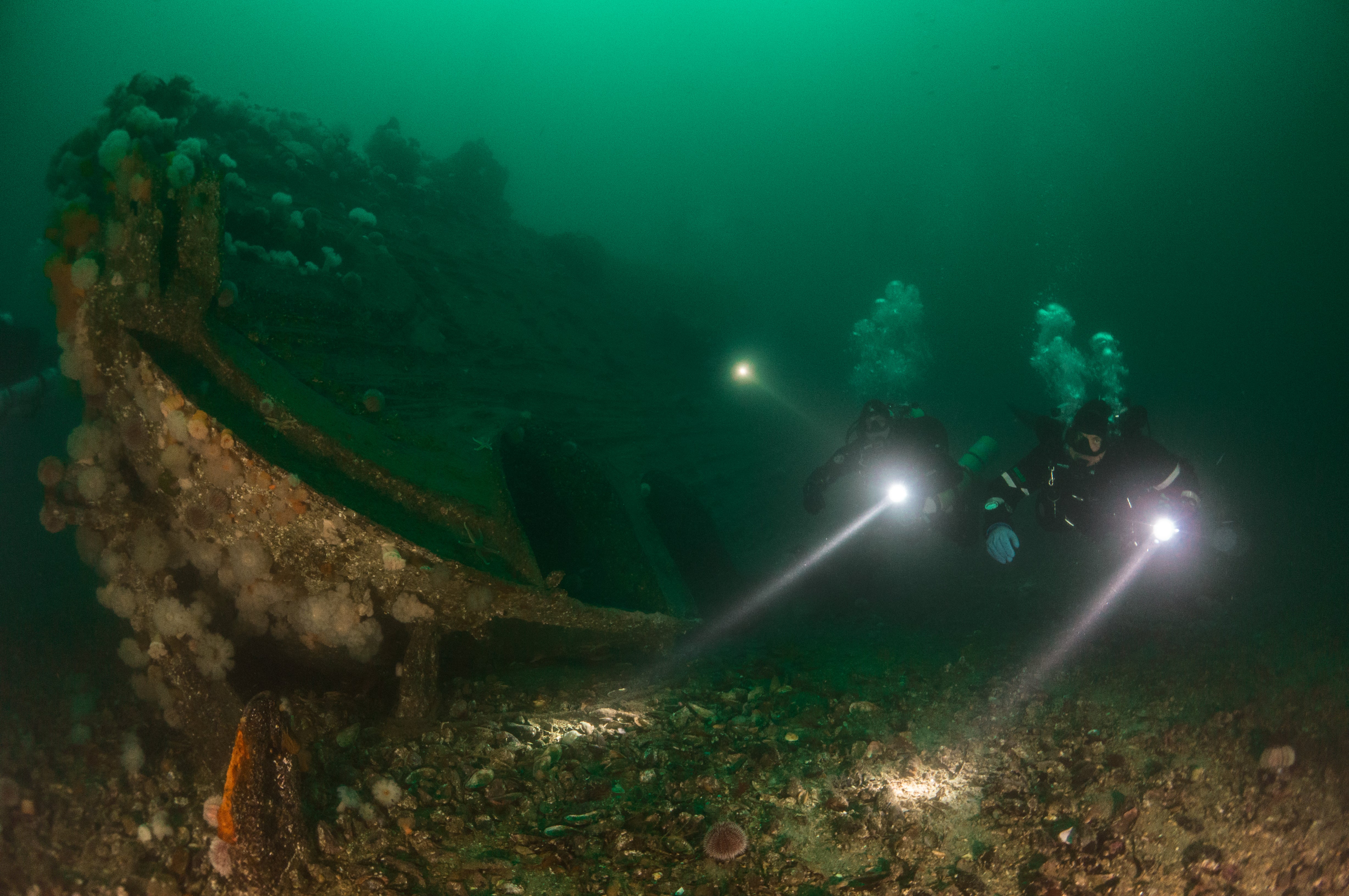
One hundred years ago, on 5 June 1916, the British field marshall, Lord Kitchener, drowned off Orkney’s Scapa Flow, near Marwick Head. His ship, HMS Hampshire, had been struck by a German U-boat mine; of the 655 crewmen, only 12 survived. A superstar of the Victorian age, Kitchener is perhaps best known for the iconic “Your Country Needs YOU” recruitment poster that featured his capped, moustached face and pointing finger.
Three years after his death, in the aftermath of the Treaty of Versailles, an entire German fleet was scuttled in Scapa Flow. Most of the 74 ships were salvaged, but a handful remain intact — about 100 feet below the surface. I’ve signed up for a three-day dry suit wreck diving course with Scapa Scuba, culminating in dives to two 500-foot German cruisers: SMS Cöln and SMS Karlsruhe.
Scapa Flow is the best wreck diving site in Europe. But before I can visit this vast, underwater museum, I must first learn how to dive in a dry suit.
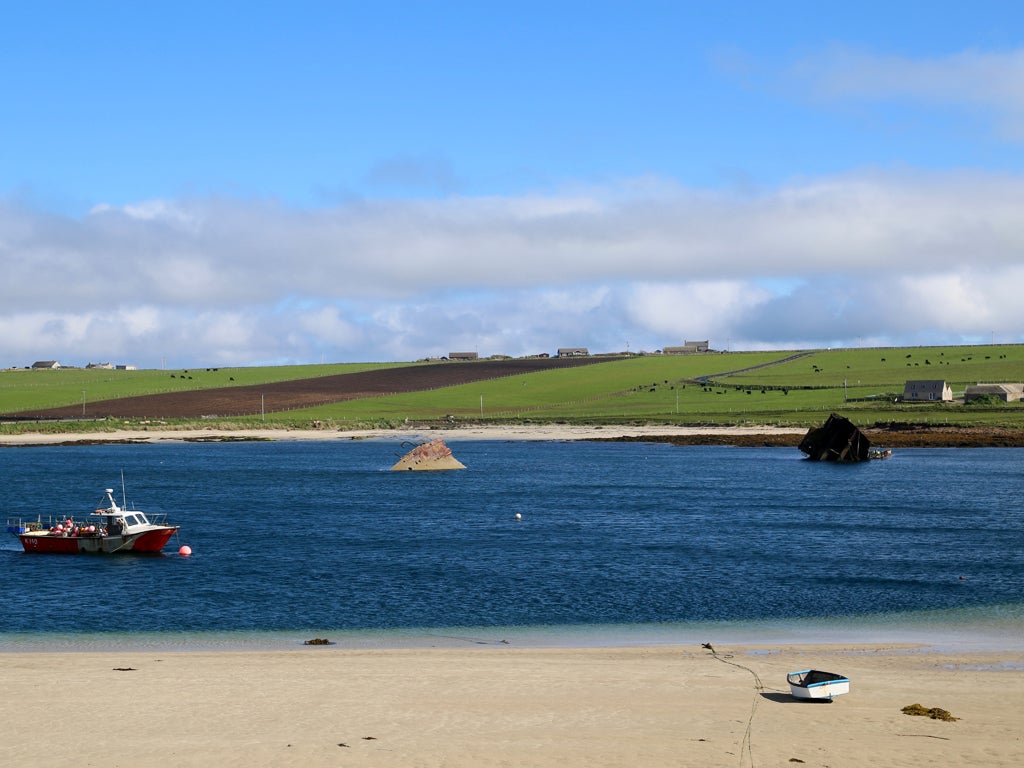
My training begins in the shallow waters of the Churchill Barriers, a collection of sunken block ships intended to protect Orkney’s harbour from attack. I’m joined by two fellow dry suit rookies, and two dive instructors: Jack and Rob. In Orkney, diving in a wet suit is a short cut to hyperthermia, so we pull on sweatshirts, leggings, and woolen socks, before struggling into our thick, neoprene suits. Securing weight belts, inflatable vests, and air tanks, we waddle towards the shore like a gang of sub aqua Michelin men.
My dry suit takes some getting used to. Slipping through the floating seaweed like a booze-addled astronaut, I’m finding it hard to control my descent into the green, primordial soup. Primordial gazpacho might be more accurate, in fact – this soup is served at a chilly 9C.
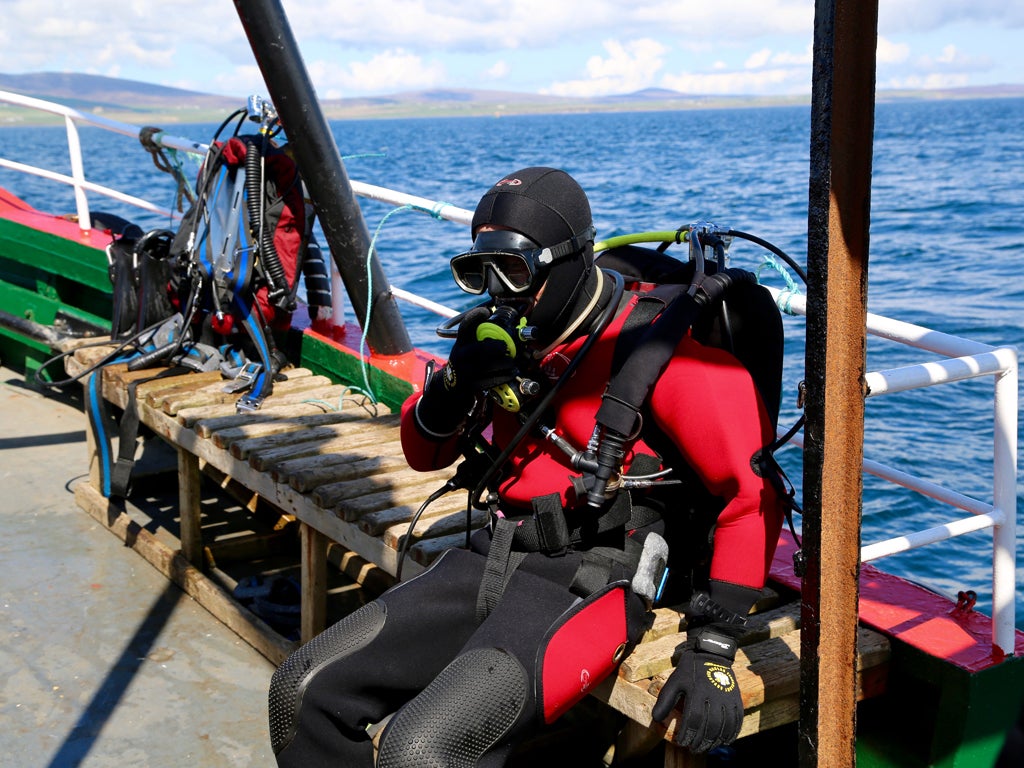
The rain falls hard from a steely sky as I step out onto the beach. Releasing my weight belt, I stagger towards the van, exhausted to the point of despair. I hadn’t banked on all this hard work; it’s a far cry from my last wet suit dive in the Bahamas.
The second day’s training goes more smoothly. The sky is clear and perfectly blue. On the drive to the barriers, I see Neolithic standing stones by the side of the road, and seals sunning themselves by a glassy lagoon. The lack of horizontal rain has buoyed my mood, and the first dive feels more controlled than any of yesterday’s attempts. We swim 20 metres from the beach to The Empire Seaman, a 2,000-ton steamer standing in eight meters of water. The slanting sun lights up her hull with an eerie, amber glow.
On our way back to the dive shop, Jack fills us in on some local history. Winston Churchill had ordered the barriers to be built in 1939, after HMS Royal Oak was torpedoed by a German U-boat while anchored at Scapa Flow. 833 seamen died that night, many of them boys of 16 or 17 years old.
The next day, before setting out to dive the German cruisers, I make the mistake of searching Scapa Flow diving fatalities online. I wish I hadn’t; they happen roughly once a year. Swallowing my fear as best I can, I suit up and step off the side of the fishing boat, following Jack down the anchor line towards SMS Cöln. Our descent is quick, and at 27 metres the steel hull is outlined through the greyish gloom. Lying on its side like a monstrous whale, the wreck’s port side is matted with anemones and dead man’s fingers (not literally, I’m relieved to say). A crab glares at me from the conning tower as I squint through the port holes into what was once the officer’s accommodation.
After a break for lunch (sweet tea and soggy sandwiches have never tasted so good) we jump into the water again, and descend towards SMS Karlsruhe. The wreck is shallower, with less current, and better visibility. Prickly starfish cling to the flanks, and solemn-looking groupers hover above us in the filtering sunlight.
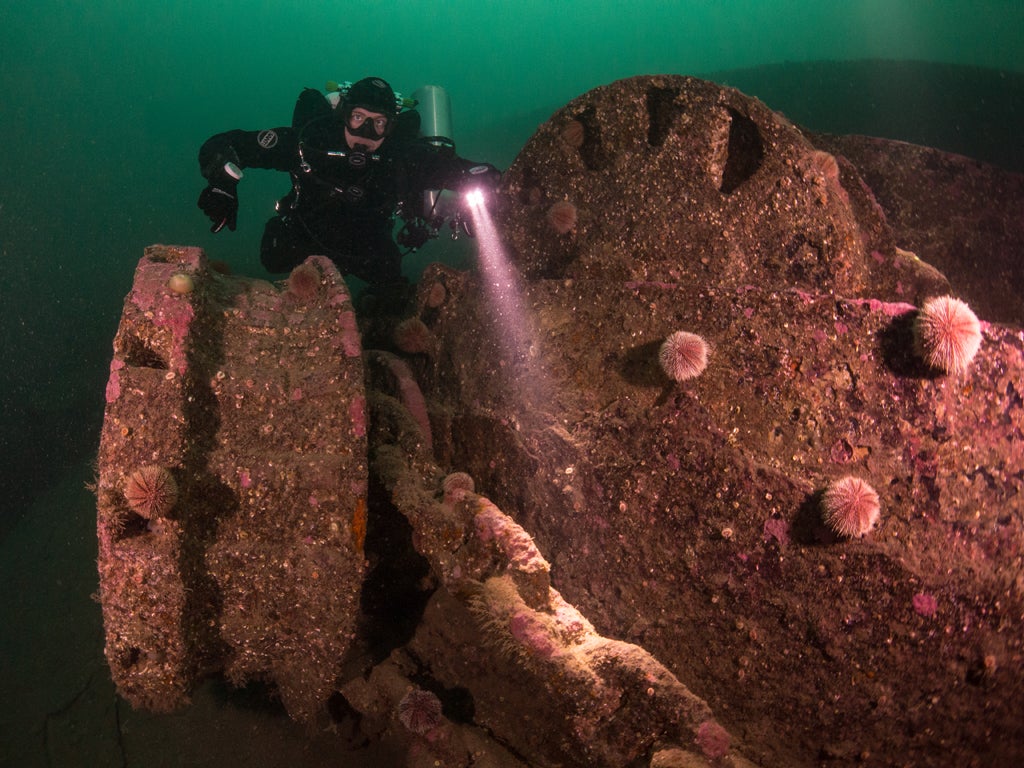
SMS Karlsruhe is 155 meters long: floating over her rusting hull feels like peering over the side of a skyscraper. As I follow Jack through an overarching girder, I come to a shuddering halt, and find that I am unable to move. My suit has snagged on a jagged piece of steel, and I float like a frozen flounder as Jack slowly and calmly disentangles me from the wreckage. I am oddly unruffled for the remainder of the dive. It is only when I get to the surface that I feel a surge of adrenalin and – I’m not afraid to admit it – an icy finger of terror at the back of my throat.
Floating 30 metres above the gargantuan cruiser, I think of the men who died on HMS Hampshire, on HMS Royal Oak, and on the German ships at The Battle of Jutland, in which 8,645 British and German troops perished in a single day. I picture them swallowing seawater; sinking in the murk and the mud; clawing at the currents in silent terror. For what? For the King? For the Kaiser? The battle was inconclusive. Neither side won. What a terrible waste of human life, it seems to me.
The following morning, I visit the summer exhibition at The Stromness Museum: The loss of HMS Hampshire and the death of Lord Kitchener. A glass case contains a naval badge crew members sent home to their wives and girlfriends; a vinyl disc entitled “Piano Playtime No.1”; and the framed, faded photograph of a wide-eyed child: “Frank Potter, Boy 1st Class, Age 17, lost at sea on HMS Hampshire, June 5th, 1916.”
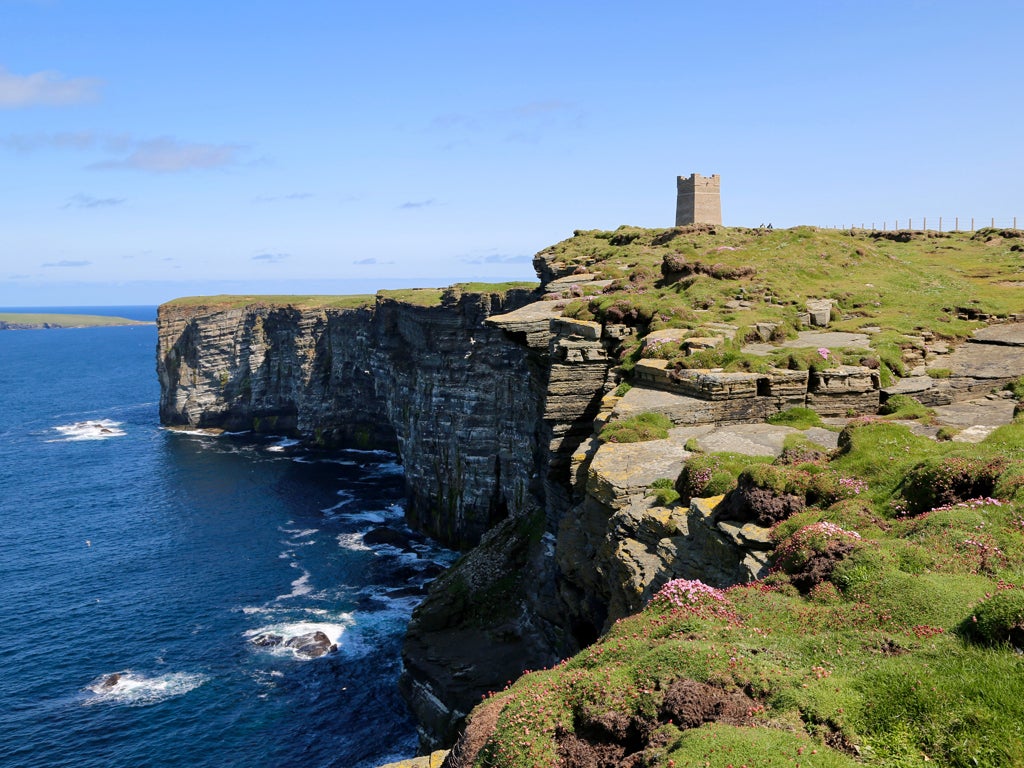
The Kitchener Memorial Tower – the site of the sinking of HMS Hampshire – is my last port of call. From this high vantage point, I can see the Norse stronghold, Brough of Bursay, to the north, and the ghostly outline of the Scottish mainland to the south. The cliffs at Marwick Head plunge directly into the water. It’s obvious why so few survived. Up here the air is clean and cold – like gulps of oxygen from a scuba tank – and the melancholy beauty of the landscape is undeniable. Looking across at Kitchener’s stone tower, I feel a sudden rush of joy. I am alive, after all: here on the pinnacle of an ancient island, far above the thundering sea.
Travel essentials
Getting there
The writer travelled with easyjet (0843 104 5000; easyjet.com), which flies from Gatwick to Edinburgh from £127 return.
Kirkwall is served from Edinburgh by Flybe (0871 700 2000; flybe.com). Return flights start at £230.
Staying there
Edmund Vallance stayed at The Ferry Inn in Stromness (01856 850280; ferryinn.com). Double rooms start at £95 including breakfast.
Diving there
Scapa Scuba (01856 851218; scapascuba.co.uk) offers wreck-diving packages for divers of all levels. The writer completed a one-day PADI dry suit course (£185); one day of guided shore dives at Churchill barriers (£140); and one day of wreck dives in Scapa Flow (£160). Prices include equipment hire, PADI Dry suit manual, PADI certification, transport, boat fees and guide. PADI Advanced Open Water or equivalent is required before wreck-diving in Scapa Flow. For dives over 30 metres, divers must first attain their PADI Deep Water certificate.
More information
Join our commenting forum
Join thought-provoking conversations, follow other Independent readers and see their replies
Comments
Bookmark popover
Removed from bookmarks